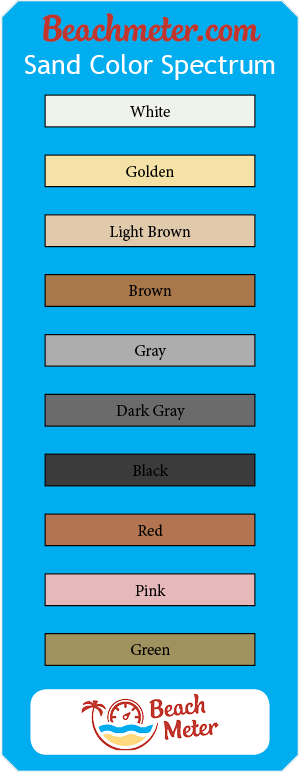Welcome to Virgin Beach!
This beach is know as Virgin (also called Perasi Beach) due to the white sand that's unusual for the area.
However, the Virgin Beach sand color isn’t pure white; it close to white rather than yellow but mixes with black sand. Virgin Beach is well-known as a white sand beach and offers clean, beautiful scenery, and clean seawater.
What determines the color of the sand though?

You may have heard of Bermuda's pink sand beaches, or of Hawaii's green and black sand beaches. Sand grains are formed when rock or other hard material is broken down by waves, a process that can take thousands of years. Beaches with pebbles or coarse sand are very young, while beaches with fine sand are older. The color of sand grains comes from the original material that formed the sand. For example, white sand on tropical beaches is pulverized pieces of dead coral. (Coral skeleton is white because it is made of calcium carbonate, a mineral also found in chalk and human bones.) The green beach on the big island of Hawaii is green because the particular kind of rock that formed the sand (a type of cooled lava called basalt) has high amounts of a green mineral called olivine.
Olivine is one of the most dense minerals in basalt, and so it hangs around long after the other, lighter minerals are eroded by waves and washed away. If you look closely at the sand beaches, you will see that it is made up of different-colored grains and maybe even small pieces of shell or coral or rock. Look closely at some sand grains. Can you guess what type of rock makes these?
The colors are from the different rocks and minerals that make up the sand.
The colors of beach sand depends on the rocks that the sand comes from. In Hawaii you can find black sand beaches, because the sand comes from eroded basalt - lava from the volcanoes. On the southern-most tip of Hawaii there is a green-sand beach. That sand is made of olivine, an igneous rock that is rare on the surface of the earth because it breaks down up here, and is stable inside the earth (where the pressure is higher and the temperature hotter. You may have also been on black-sand beaches in Bali, where the sand comes from eroded basalt from the volcanoes.
Remember, sand is simply the product the erosion of the rocks rubbing each other under the action of the waves. So if the bottom of the ocean is made of black lava you will have a good chance if the beach is an old beach that it will have a lot of black sand coming from the rubbing the lava rocks or sea shells under the action of the surf and the waves. The sea shells or coral also can be at the origin of a beach color. Sea shell are usually white and the million of small shell pieces coming from the erosion will give the beach its color.
To log this Earthcache:
Please answer the following questions and then proceed with your log. Anyone who doesn't submit answers to the questions in a timely manner will have their logs deleted without notice.
- What colors of sand do you see on this beach?
- What determines each of the colors you see?
- What evidence of coral or volcanic activity can you see from GZ? Describe.
References: